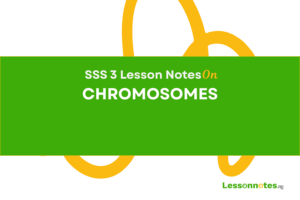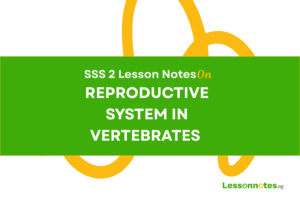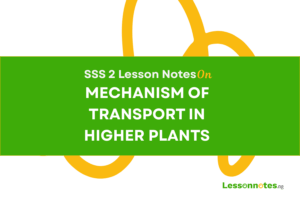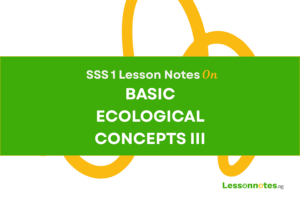Energy Transformation In Nature SS1 Biology Lesson Note
Download Lesson NoteTopic: Energy Transformation In Nature
ENERGY LOSS IN THE ECOSYSTEM
Energy is the ability to do work. All living organisms obtain energy from the food they eat. The food is produced by green plants and other organisms depend on them. As energy is passed from one organism to another along the food chain, it is progressively lost due to respiration (energy used for various metabolic activities) and heat. In most ecosystems, only about 1 – 10% of the solar energy may be available to photosynthetic producers.
LAWS OF THERMODYNAMICS
Thermodynamics simply means heat change. Heat as a form of energy that is subject to change in living organisms is governed by two laws.
The first law of thermodynamics states that energy can neither be created nor destroyed, although it can be changed from one form to another. E.g. chemical energy in food is converted to kinetic energy and heat energy in our muscles when we walk or run.
The second law of thermodynamics states that in any conversion of energy from one form to another, there is always a decrease in the amount of useful energy i. e. no transformation of energy from one state to another is ever 100 percent efficient.
During metabolic activities, some chemical energy is constantly lost as heat energy from the body of an organism. As energy is converted from one form to another, there will always be a loss.
FOOD CHAIN AND LAWS OF THERMODYNAMICS
Using the first law: in a food chain, energy from the sun is transferred from the producer to the final consumer and the total of the energy remains constant.
Using the second law: as the energy is transformed from one trophic level to another, part of it is converted into heat it is lost, among a progressive drop in energy in successive trophic levels.
PYRAMID OF ENERGY & LAWS OF THERMODYNAMICS
(i) Using the first law: The energy of the producers at the base of the pyramid is higher and it is gradually transformed to other trophic levels.
(ii) Using the second law: As energy is transferred from one trophic level to another, part of the energy is converted to heat.
ENERGY FLOW AND LAWS OF THERMODYNAMICS
(i) Using the first law: Energy flows from producers to 10 consumers, then to 20 consumers and finally to 30 consumers in a food chain. The energy flow in a food chain is therefore in one direction only.
(ii) Using the Second law: Energy transfer between trophic levels is not 100%. Successive levels have less useful energy and so can only support fewer organisms. Produce (green plants) have the highest amount of energy. When herbivores feed on the plants, the energy level is reduced. When carnivores consume the herbivores, the energy level is reduced.
ASSIGNMENT:
- State the laws of thermodynamics and explain them.
- Explain the pyramid of energy and food chain using the laws of thermodynamics.






















